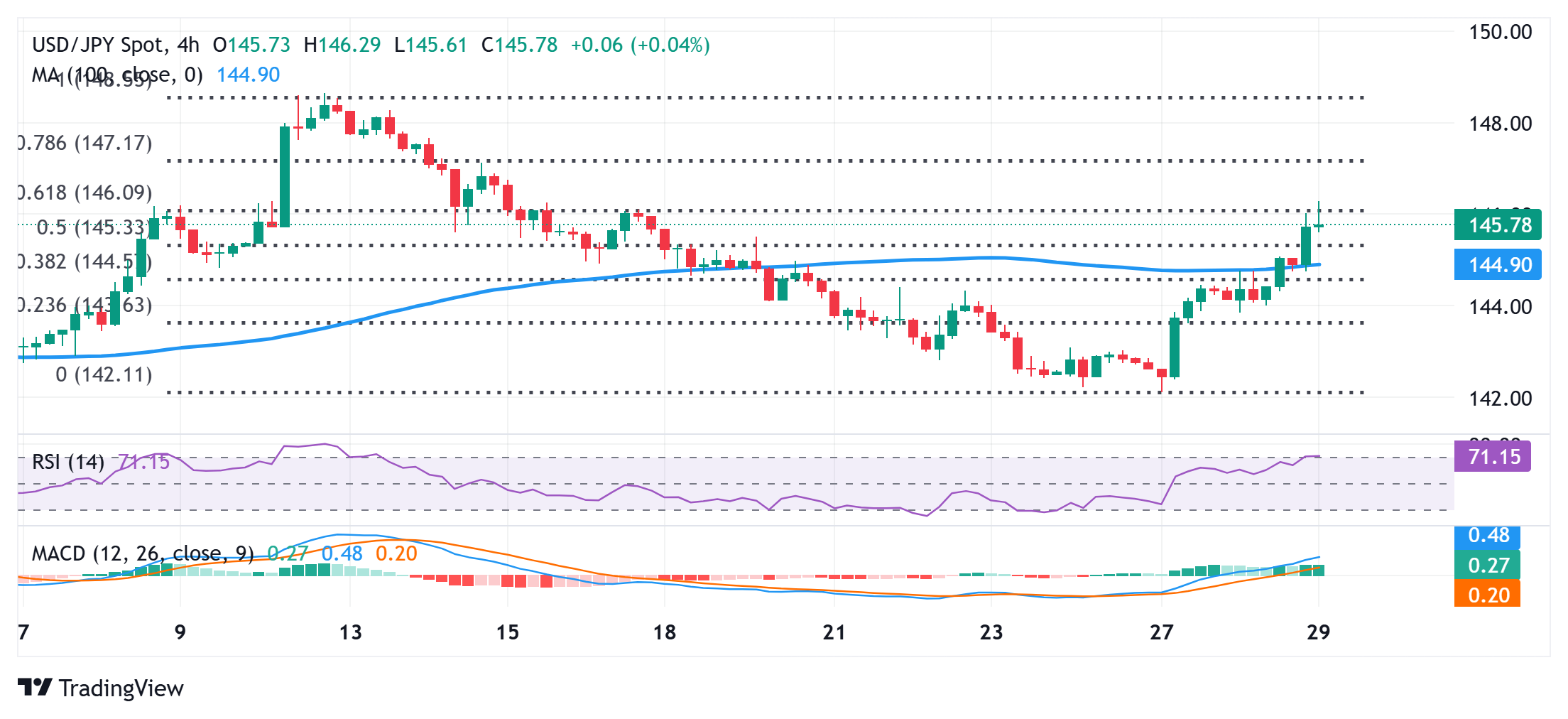The Japanese Yen weakens across the board on Thursday in reaction to the tariff-block news.The USD benefits from Wednesday’s hawkish FOMC Minutes and supports the USD/JPY pair.The divergent BoJ-Fed policy expectations keep a lid on any further gains for the currency pair.
The Japanese Yen (JPY) remains heavily offered through the Asian session as news that a US federal court blocked President Donald Trump’s “Liberation Day” tariffs from going into effect continues to undermine safe-haven assets. Moreover, worries about the debt load in Japan turn out to be another factor weighing on the JPY. This, along with a strong follow-through US Dollar (USD) buying, lifted the USD/JPY pair to a two-week high on Thursday.
However, expectations that the Bank of Japan (BoJ) could raise interest rates again in 2025 offer support to the JPY. Meanwhile, bets that the Federal Reserve (Fed) will lower borrowing costs further mark a big divergence in comparison to hawkish BoJ expectations and contribute to limiting losses for the lower-yielding JPY. Apart from this, concerns about the worsening US fiscal conditions keep a lid on the USD appreciation and the USD/JPY pair.
Japanese Yen bulls remain on the sidelines amid the risk-on impulse, despite BoJ rate hike betsUS President Donald Trump’s proposed reciprocal trade tariffs were blocked by the Court of International Trade on Wednesday. The court ruled that the president overstepped his authority by imposing tariffs on goods from nearly every country in the world.The global risk sentiment gets a strong lift following the court’s order, with Wall Street futures and equities across Asia rising sharply on Thursday. This undermines demand for traditional safe-haven assets, including the Japanese Yen, during the Asian session.Demand at an auction of Japan’s longest-tenor bonds on Wednesday fell to the lowest since July and added to worries about the fiscal health of the economy. This further drives flows away from the JPY and pushes the USD/JPY pair higher for the fourth straight day.Meanwhile, traders have been pricing in the possibility that the Bank of Japan will hike interest rates again this year amid signs of broadening inflation in Japan. Hence, the focus will remain glued to the release of the Tokyo Consumer Price Index on Friday.Minutes of the Federal Reserve’s May 6-7 policy meeting released on Wednesday revealed a consensus to maintain the wait-and-see approach on interest rates amid the uncertainty about the economic outlook and trade policies. The outlook supports the US Dollar.The CME Group’s FedWatch Tool, however, indicates a greater chance that the US central bank might still deliver at least two 25 basis point rate cuts this year. This marks a big divergence in comparison to hawkish BoJ expectations and favors the JPY bulls.Market participants now look forward to Thursday’s US economic docket – featuring the release of the Prelim Q1 GDP print, the usual Weekly Initial Jobless Claims, and Pending Home Sales data. This, along with Fedspeaks, might influence the USD demand.USD/JPY technical setup supports prospects for emergence of dip-buyers near the 145.35 support
From a technical perspective, the USD/JPY pair stalls its strong intraday move up near the 50% retracement level of the recent downfall from the monthly peak amid a slightly overbought Relative Strength Index (RSI) on hourly charts. That said, oscillators on the daily chart have just started gaining positive traction and support prospects for an extension of the weekly uptrend. Hence, any corrective pullback below the 145.35 region, or the 38.2% Fibonacci retracement level could be seen as a buying opportunity and remain limited near the 145.00 psychological mark. The latter is near the 200-period Simple Moving Average (SMA) on the 4-hour chart, which if broken will negate the near-term positive outlook.
On the flip side, the USD/JPY bulls might now await sustained strength and acceptance above the 146.00 mark before placing fresh bets. Spot prices might then accelerate the positive move towards the 146.70-146.75 intermediate hurdle en route to the 147.00 round figure and the next relevant barrier near the 147.60 supply zone. Some follow-through buying should allow the currency pair to climb further beyond the 148.00 mark, towards the monthly swing high, around the 148.65 region.
Bank of Japan FAQs
The Bank of Japan (BoJ) is the Japanese central bank, which sets monetary policy in the country. Its mandate is to issue banknotes and carry out currency and monetary control to ensure price stability, which means an inflation target of around 2%.
The Bank of Japan embarked in an ultra-loose monetary policy in 2013 in order to stimulate the economy and fuel inflation amid a low-inflationary environment. The bank’s policy is based on Quantitative and Qualitative Easing (QQE), or printing notes to buy assets such as government or corporate bonds to provide liquidity. In 2016, the bank doubled down on its strategy and further loosened policy by first introducing negative interest rates and then directly controlling the yield of its 10-year government bonds. In March 2024, the BoJ lifted interest rates, effectively retreating from the ultra-loose monetary policy stance.
The Bank’s massive stimulus caused the Yen to depreciate against its main currency peers. This process exacerbated in 2022 and 2023 due to an increasing policy divergence between the Bank of Japan and other main central banks, which opted to increase interest rates sharply to fight decades-high levels of inflation. The BoJ’s policy led to a widening differential with other currencies, dragging down the value of the Yen. This trend partly reversed in 2024, when the BoJ decided to abandon its ultra-loose policy stance.
A weaker Yen and the spike in global energy prices led to an increase in Japanese inflation, which exceeded the BoJ’s 2% target. The prospect of rising salaries in the country – a key element fuelling inflation – also contributed to the move.


AloJapan.com